The very first football games were played in front of few spectators and were likely lackluster in their game production capabilities. Today, football game’s offer an immersive experience: From giant jumbotrons featuring fans at random and lively PA announcers entertaining the crowd during lulls in the game, a lot goes into a day at a football stadium.
But with all the sporting event’s fanfare comes a great deal of energy usage, which can be harmful during a time of extreme climate vulnerability.
During moments of peak demand on game days in Dallas, the Cowboys’ AT&T Stadium uses 10 megawatts of energy. This fact, uncovered by the Wall Street Journal, went viral in 2013 when the news outlet reported that AT&T Stadium’s energy capacity was three times the size of Liberia’s.
This might be more math than a sports column should get into, but 10 megawatts is a lot. It’s enough to power about 3,600 homes. This much power makes for a great gameday experience, but what effect does it have on the climate?
The answer: not a great one. The average American household produces around 16 tons of carbon dioxide per year. This suggests that huge stadiums such as AT&T have the ability to pump out carbon at insanely high rates.
New venues such as SoFi Stadium, the home of the 2022 Super Bowl, wowed the sports world with their elegant designs and impressive amenities. SoFi also boasts its energy efficiency and environmentally friendly practices.
For instance, the roof of SoFi Stadium — made up of several operable panels — can open to allow free airflow and hot air to escape. This allows the stadium to be at a comfortable temperature even when at capacity. Most stadiums stay cool with energy-consuming air conditioning systems. SoFi figured out a way to cut that cost.
The gold standard of energy-efficient stadiums is Seattle’s Climate Pledge Arena, home of the Seattle Kraken and the Seattle Storm.
Climate Pledge Arena employs 100% sustainable energy, all electric operations and composting and recycling programs, among other environmentally-friendly practices. Their ice hockey rink is made up of recycled rainwater, captured in a gigantic 15,000 gallon underground cistern.
The Arena was founded on the principles of The Climate Pledge, an international agreement between 217 businesses to reach net zero carbon by 2040, a mere 19 years from now.
Now, CPA isn’t perfect. It still contributes to the production of methane and other harmful gasses. It also runs in partnership with Amazon, whose activity produced the equivalent of 60.64 million metric tons of carbon dioxide in 2020, a 19% increase compared to 2019. Remember, the average American household produces 16 tons per year. But committing to carbon neutrality is really the least that stadiums, organizations and companies can do.
*steps on soapbox*
The release of methane and other greenhouse gasses is causing the ozone — the layer of our atmosphere that protects us from the sun and the reason we are alive to read the Daily Trojan today — to deteriorate. Methane can be emitted in thousands of ways: the construction of concrete, the burning of fossil fuels and the powering of an air conditioning system to name a few.
To preserve the world that we have inhabited for the past two million years or so, we must come up with creative solutions to the climate crisis. Sports arenas present an interesting case study. How can other buildings emulate SoFi’s natural air conditioning system? How can corporations or even towns use water more efficiently, like CPA?
It’s easy to become jaded about the future of our climate. It’s an inherently negative subject to think about and easy enough to ignore, for now. However, it is perhaps the most important issue we will face in our lifetimes and will affect everyone in ways big or small.
Stadiums such as SoFi and CPA can start a conversation. Sports must adapt to a changing climate and serve the earth more effectively by taking into consideration their carbon footprint. There are plenty of ways to use clean energy and opportunities to research efficient climate-friendly solutions.
While achieving net zero emissions is essentially an impossible task, the push for carbon neutrality is vital to slow down the concerning changes in weather and climate patterns. Sports teams, as billion-dollar companies, have a responsibility to their fans, surrounding communities and world to cut back on carbon emissions in any way possible.


 LED Tube Light
LED Tube Light LED Panel Light
LED Panel Light LED Down Light
LED Down Light LED Corn Bulb
LED Corn Bulb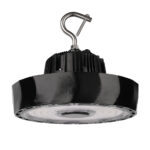 LED Highbay Light
LED Highbay Light LED Linear Strip Light
LED Linear Strip Light LED Exit Sign&Emergency Light
LED Exit Sign&Emergency Light LED Vapor Tight Fixture
LED Vapor Tight Fixture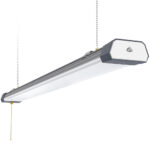 LED Shop Light
LED Shop Light LED Track Light
LED Track Light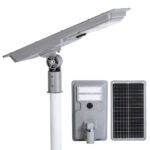 LED Solar Light
LED Solar Light LED Street Light
LED Street Light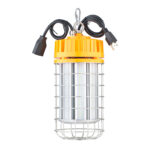 LED Work Light
LED Work Light LED Bollard Light
LED Bollard Light LED Canopy Light
LED Canopy Light LED Retrofit Kit
LED Retrofit Kit LED Post Top Light
LED Post Top Light LED Flood Light
LED Flood Light LED Shoebox Area Light
LED Shoebox Area Light LED Wallpack Light
LED Wallpack Light LED Dusk to Dawn Barn Light
LED Dusk to Dawn Barn Light LED Explosion Proof Light
LED Explosion Proof Light LED Fishing Light
LED Fishing Light LED Stadium Light
LED Stadium Light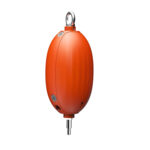 Emergency Backup Battery
Emergency Backup Battery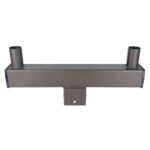 Pole Mounting Bracket
Pole Mounting Bracket Dimmer Switch
Dimmer Switch Photocell Sensor
Photocell Sensor Motion Sensor
Motion Sensor Light Pole
Light Pole Multi-strand Copper Wire
Multi-strand Copper Wire Waterproof Joint
Waterproof Joint Surge Protective Device
Surge Protective Device LED Driver
LED Driver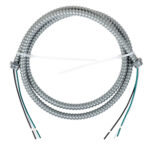 Flexible Conduit
Flexible Conduit LED T8 Emergency Tube Light
LED T8 Emergency Tube Light LED E26/E39 Retrofit Bulb
LED E26/E39 Retrofit Bulb EV Flex-AC charger
EV Flex-AC charger
I just want to offer you a big thumbs up for your excellent information you have got here on this post.